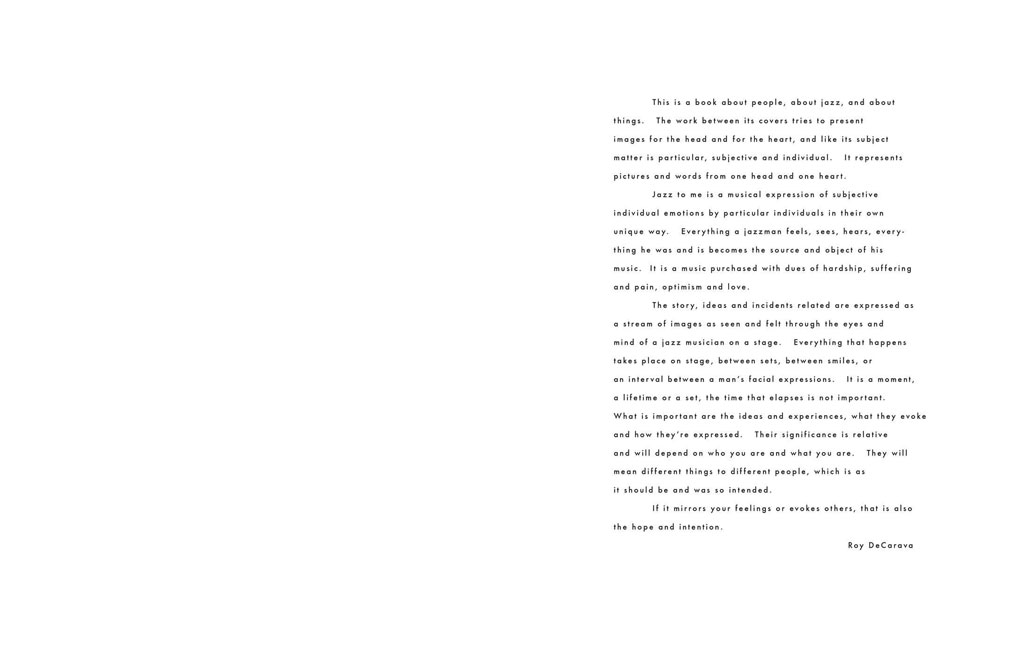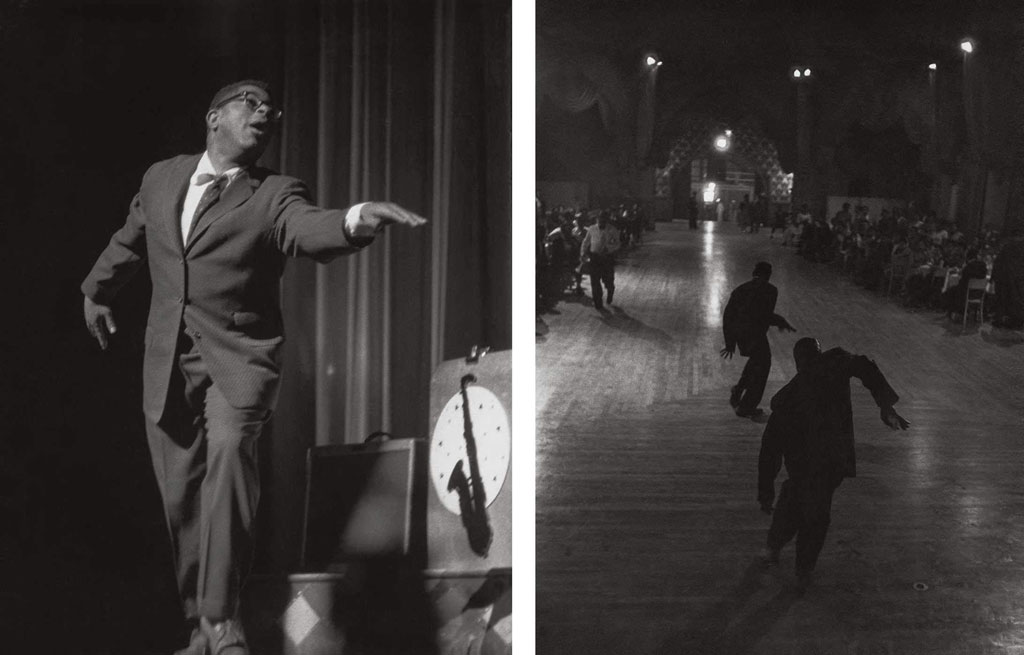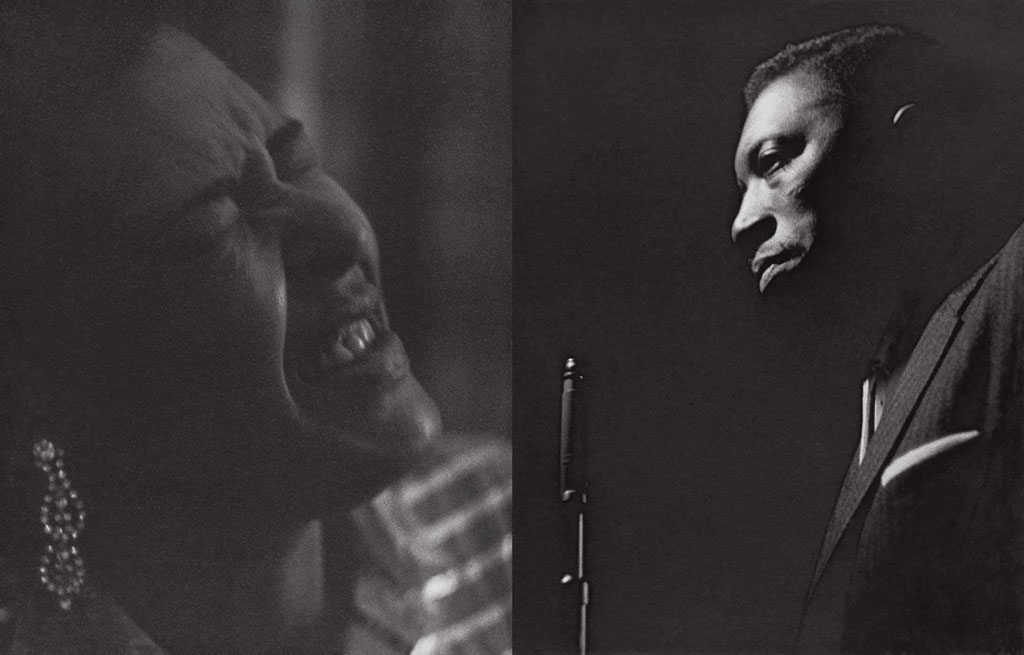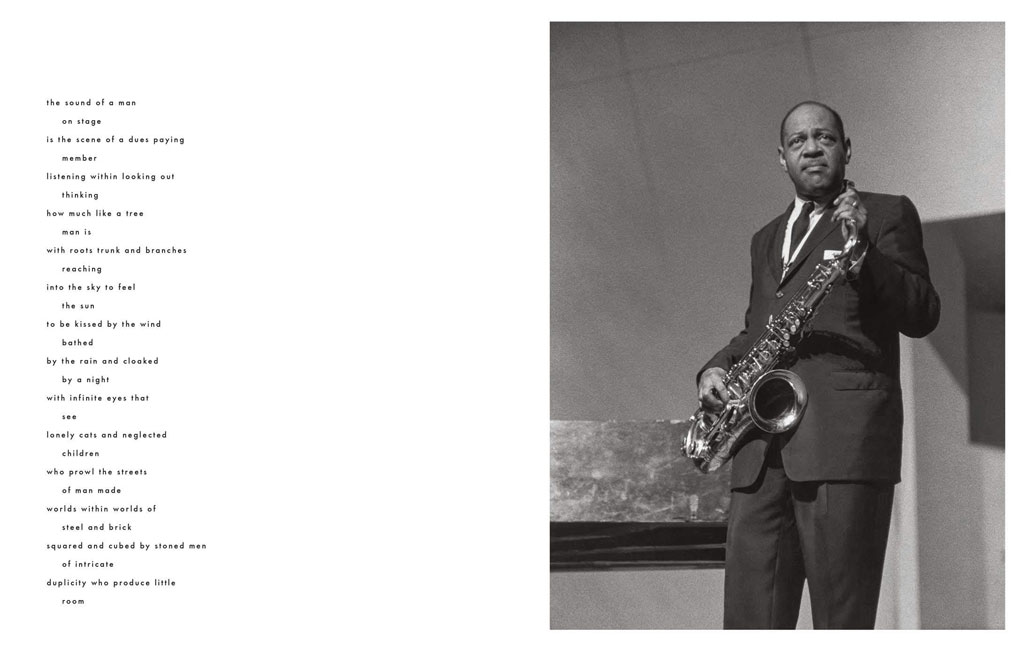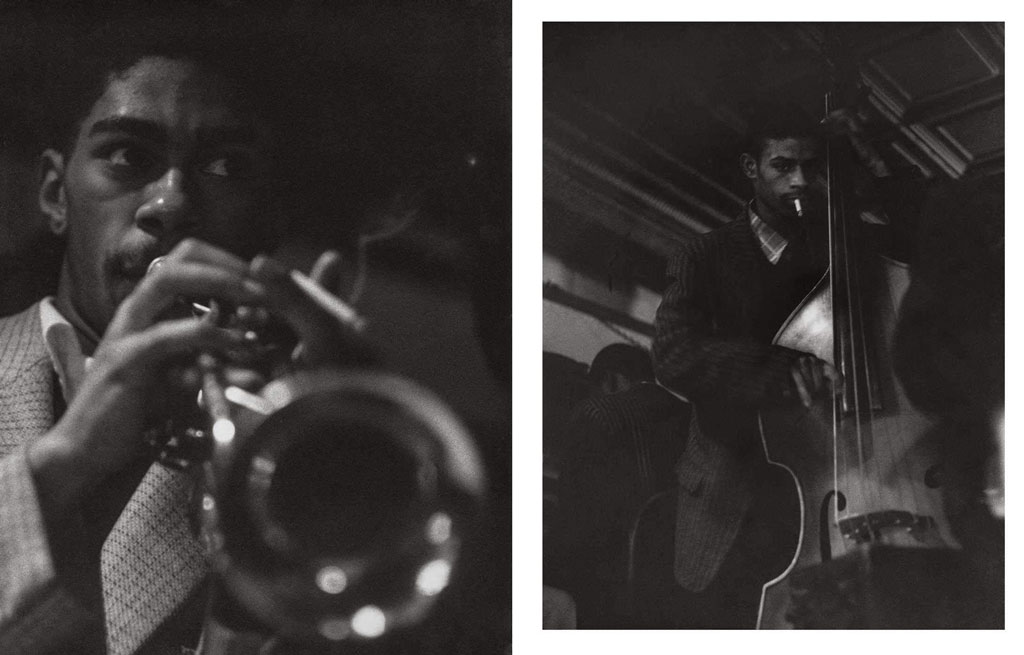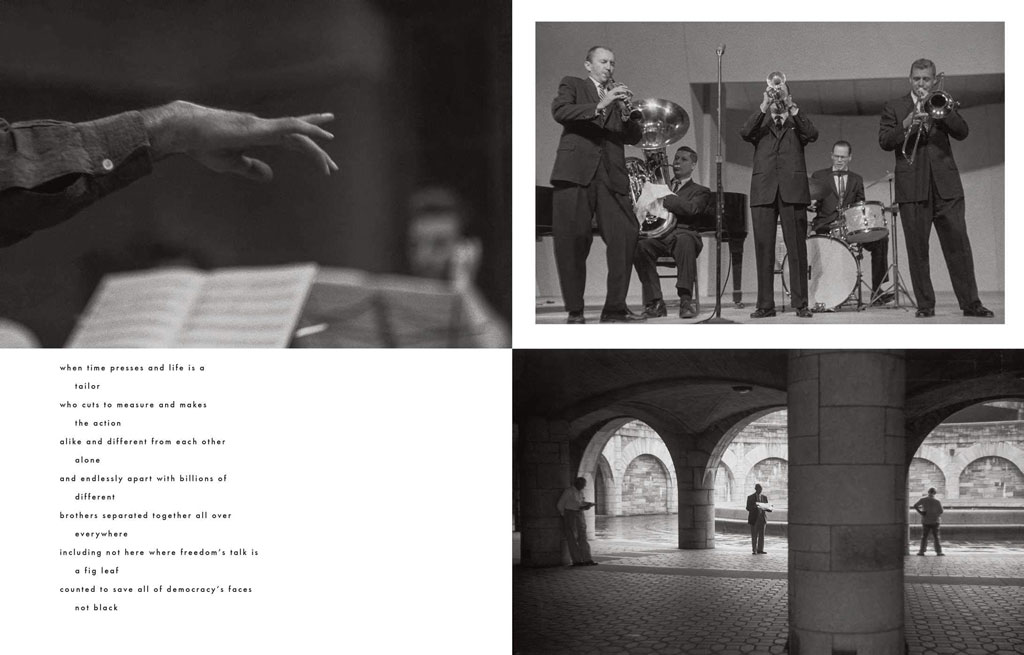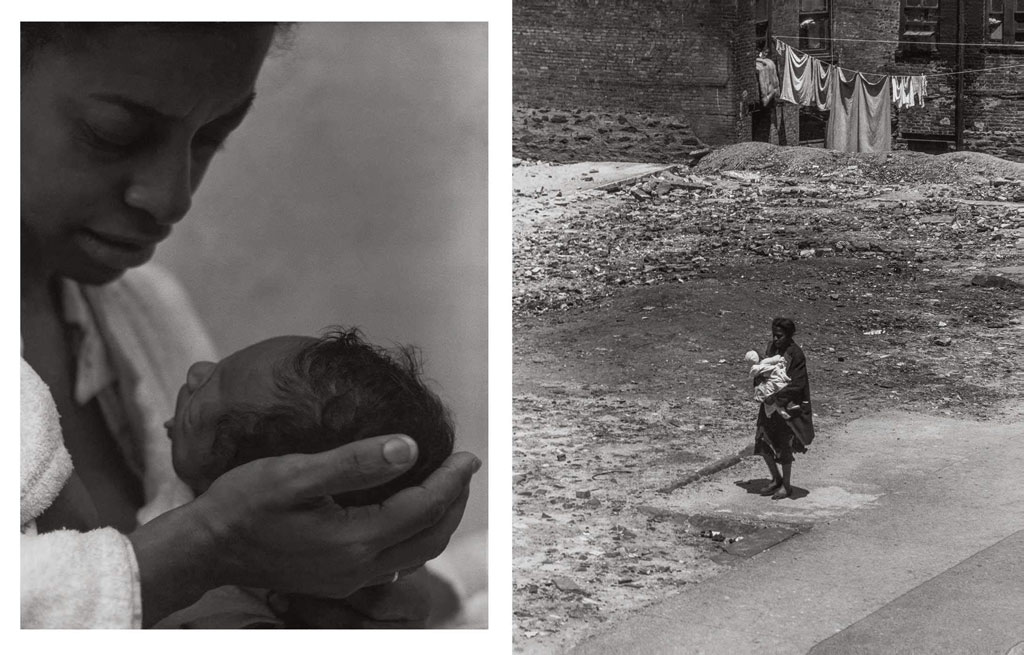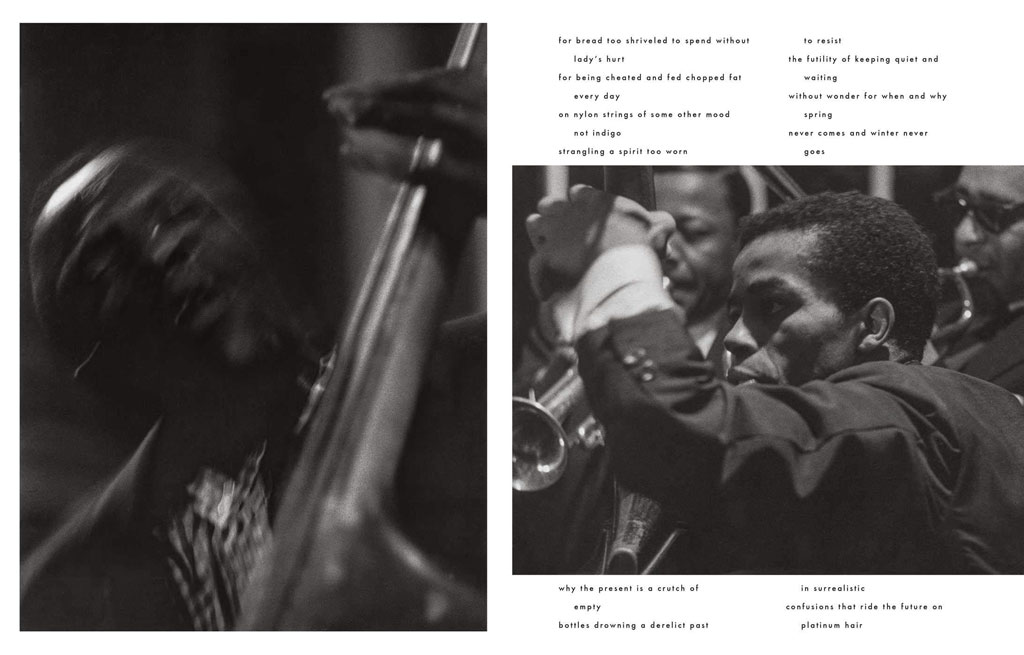BOOK:Roy DeCarava-The Sound I Saw, First Print Press & David Zwirner Books
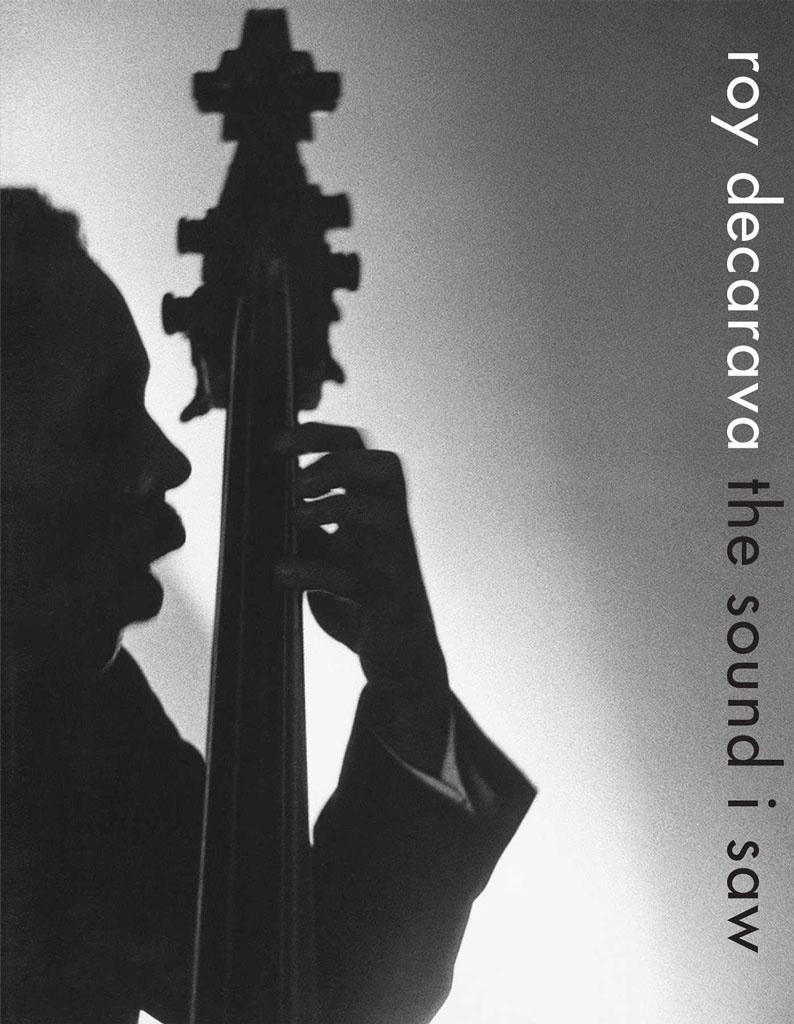 In 1958, when Columbia Records commissioned Roy DeCarava to shoot the cover photograph for Miles Davis’s “Porgy and Bess”, most sleeve photographers opted for one of two prevailing clichés: a flattering studio portrait or an intense performance shot. But DeCarava wanted something out of the ordinary. The story goes that he pitched up unannounced at Davis’s house, to prevent Davis giving too much preparatory thought to the image. Once inside, DeCarava took an informal photograph of Davis sitting next to his girlfriend, the dancer Frances Taylor, in the backyard. Neither of their heads or faces are in the frame. Instead the viewer’s gaze is directed towards Taylor reaching out with her left hand to caress the trumpet Davis is holding on his lap. Intimate and sensual, DeCarava’s shot perfectly captures the atmosphere of George Gershwin’s opera as interpreted by Davis. This image is illustrative of DeCarava’s idiosyncratic approach to his work. His collection of jazz photography, “The Sound I Saw” features shots he took in and around Harlem in the late 1950s and early 1960s. Here, the visionary photographer turns his gaze on legendary jazz icons Ornette Coleman, John Coltrane, Duke Ellington, and Billie Holiday, among many others. It was while shooting of “The Sound I Saw” that DeCarava perfected the two core signatures of his style – the use of available light rather than flash and an embrace of the dark tones that often resulted from that choice. It was while shooting “The Sweet Flypaper of Life” and “The Sound I Saw” that DeCarava perfected the two core signatures of his style – the use of available light rather than flash and an embrace of the dark tones that often resulted from that choice. Conceived, designed, written, and made as an artist maquette by DeCarava in the early 1960s “The Sound I Saw” went unpublished for almost half a century until it was printed by Phaidon in 2001. At its core is a visual and philosophical journey to plumb the meaning of a creative life. The artist’s intention in proposing a complex relationship between vision and music moves his comprehensive, decade-long reflection to the status of a magnum opus. This new edition, copublished by First Print Press and David Zwirner Books, includes new scholarship by Radiclani Clytus and reflections by Sherry Turner DeCarava.-Dimitris Lempesis
In 1958, when Columbia Records commissioned Roy DeCarava to shoot the cover photograph for Miles Davis’s “Porgy and Bess”, most sleeve photographers opted for one of two prevailing clichés: a flattering studio portrait or an intense performance shot. But DeCarava wanted something out of the ordinary. The story goes that he pitched up unannounced at Davis’s house, to prevent Davis giving too much preparatory thought to the image. Once inside, DeCarava took an informal photograph of Davis sitting next to his girlfriend, the dancer Frances Taylor, in the backyard. Neither of their heads or faces are in the frame. Instead the viewer’s gaze is directed towards Taylor reaching out with her left hand to caress the trumpet Davis is holding on his lap. Intimate and sensual, DeCarava’s shot perfectly captures the atmosphere of George Gershwin’s opera as interpreted by Davis. This image is illustrative of DeCarava’s idiosyncratic approach to his work. His collection of jazz photography, “The Sound I Saw” features shots he took in and around Harlem in the late 1950s and early 1960s. Here, the visionary photographer turns his gaze on legendary jazz icons Ornette Coleman, John Coltrane, Duke Ellington, and Billie Holiday, among many others. It was while shooting of “The Sound I Saw” that DeCarava perfected the two core signatures of his style – the use of available light rather than flash and an embrace of the dark tones that often resulted from that choice. It was while shooting “The Sweet Flypaper of Life” and “The Sound I Saw” that DeCarava perfected the two core signatures of his style – the use of available light rather than flash and an embrace of the dark tones that often resulted from that choice. Conceived, designed, written, and made as an artist maquette by DeCarava in the early 1960s “The Sound I Saw” went unpublished for almost half a century until it was printed by Phaidon in 2001. At its core is a visual and philosophical journey to plumb the meaning of a creative life. The artist’s intention in proposing a complex relationship between vision and music moves his comprehensive, decade-long reflection to the status of a magnum opus. This new edition, copublished by First Print Press and David Zwirner Books, includes new scholarship by Radiclani Clytus and reflections by Sherry Turner DeCarava.-Dimitris Lempesis
